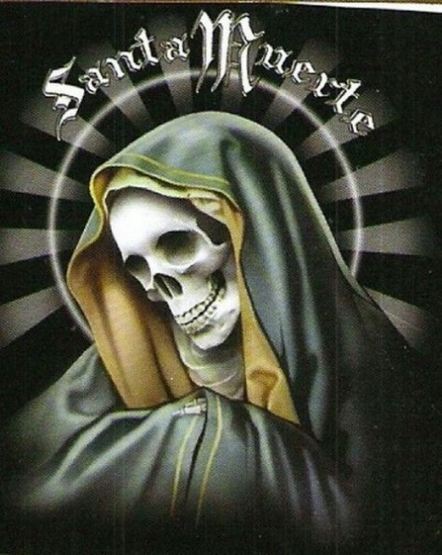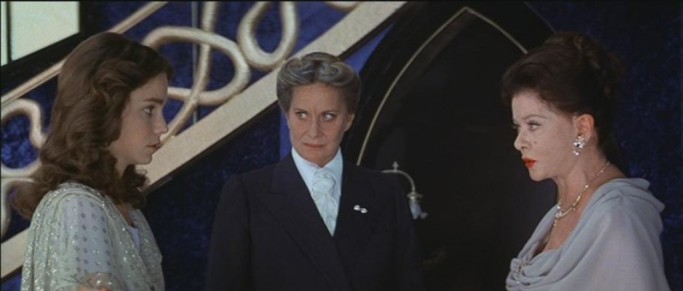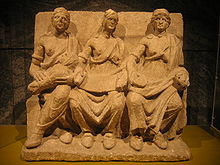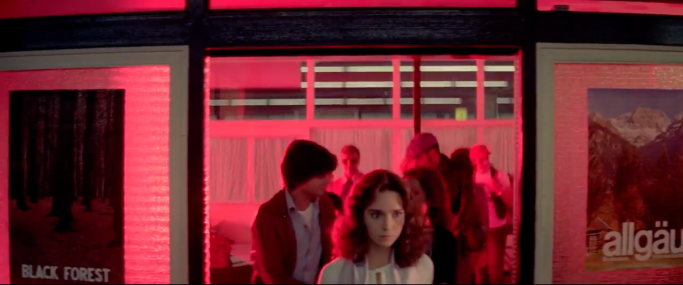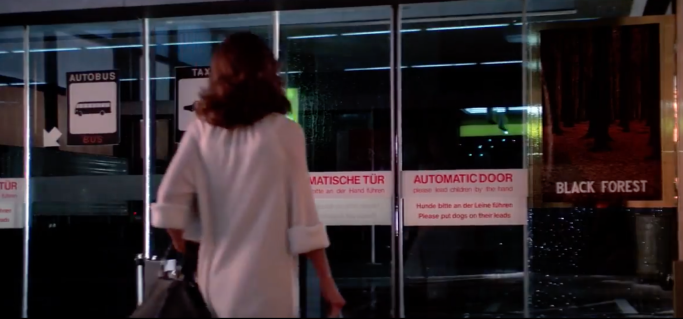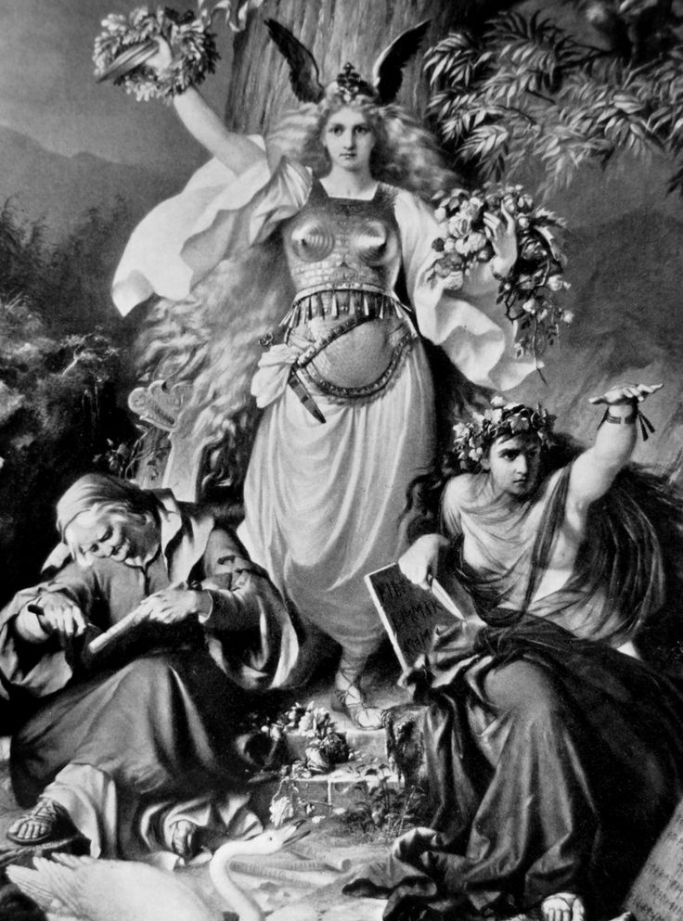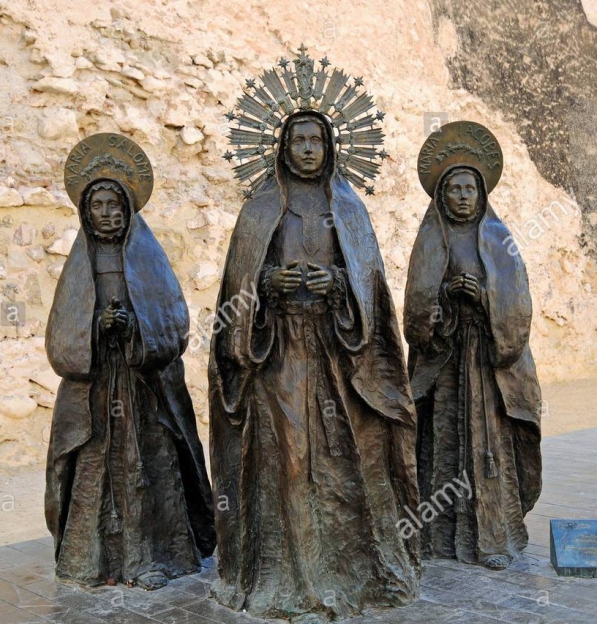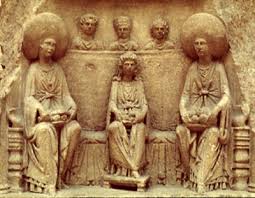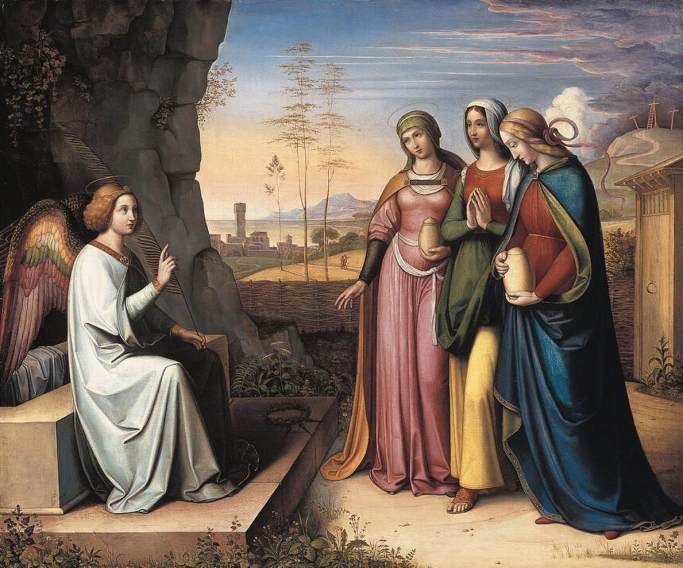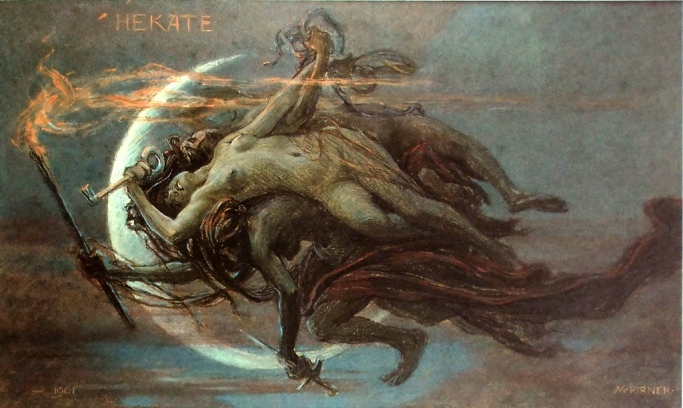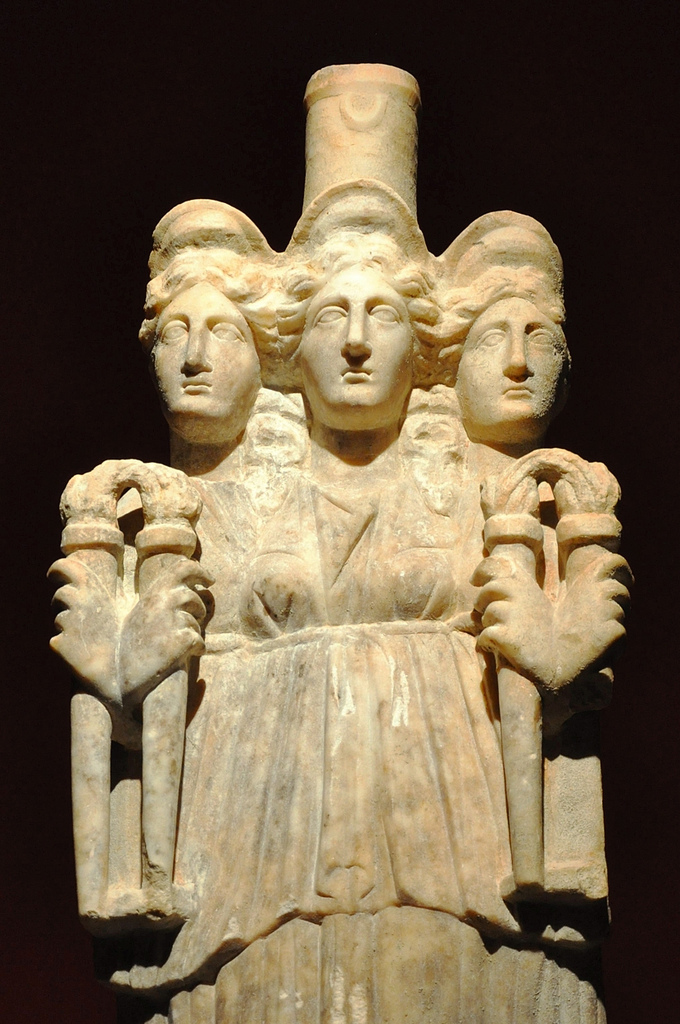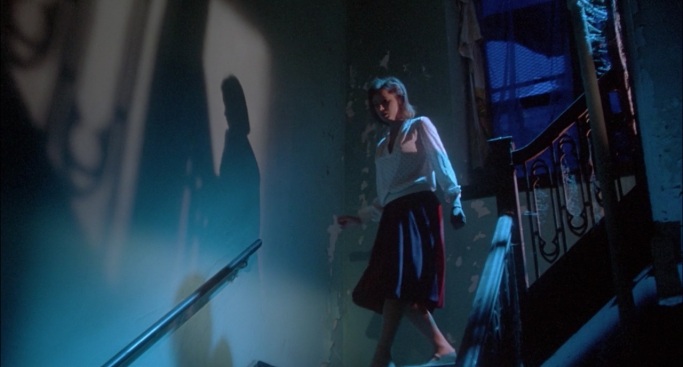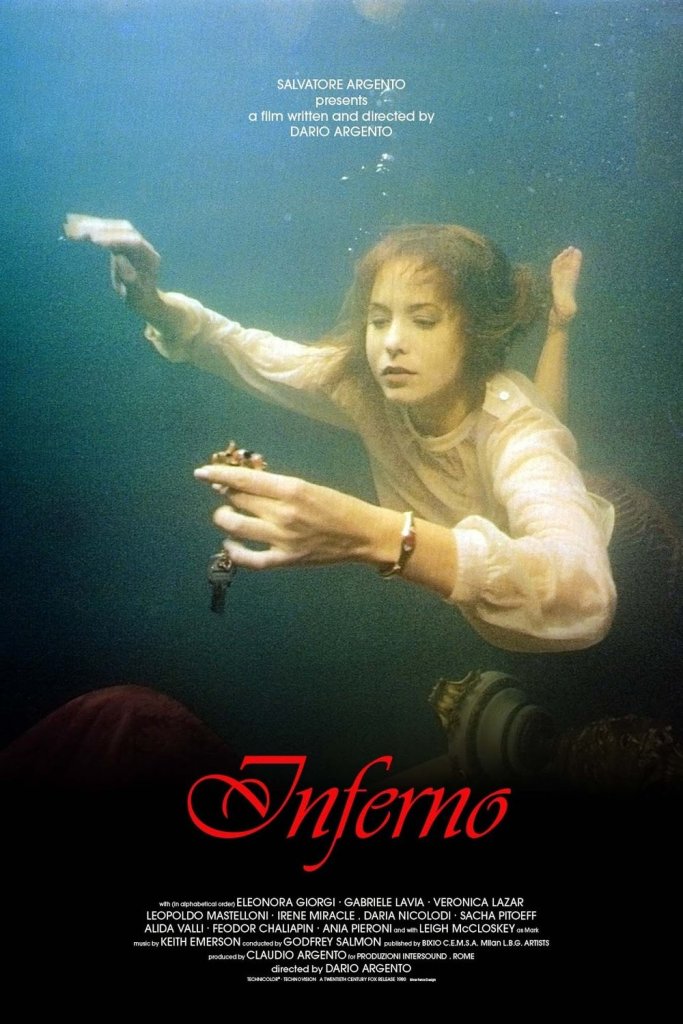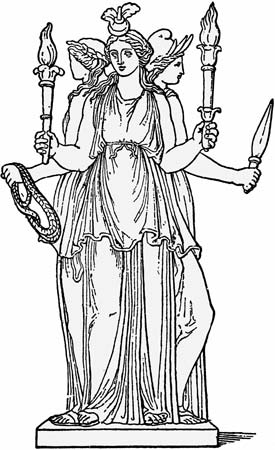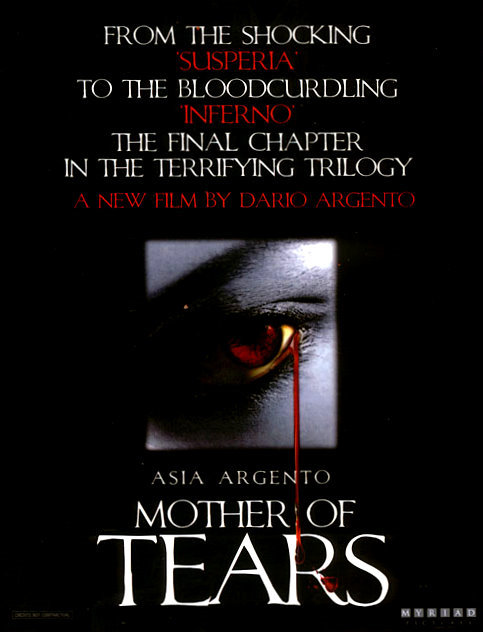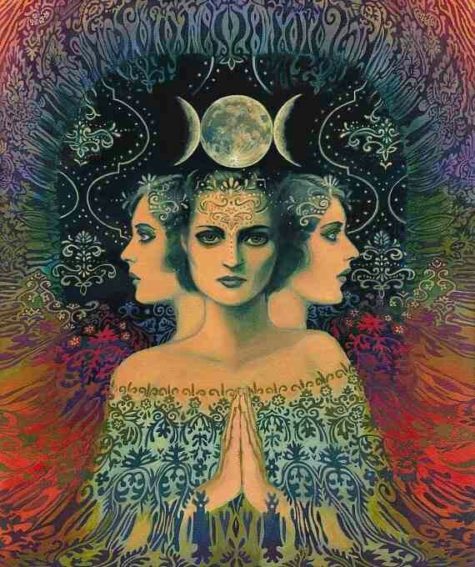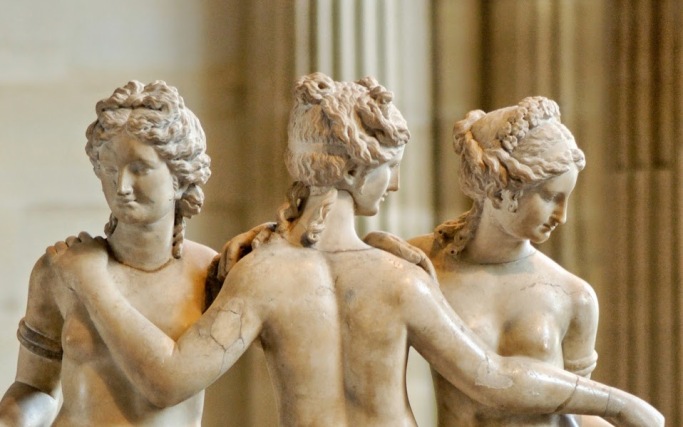By H. B. G.
As we seek for the Devil In the Details in the final part of this article on SUSPIRIA, we reach an apotheosis on our meditations upon the sublime darkness of The Three Mothers.
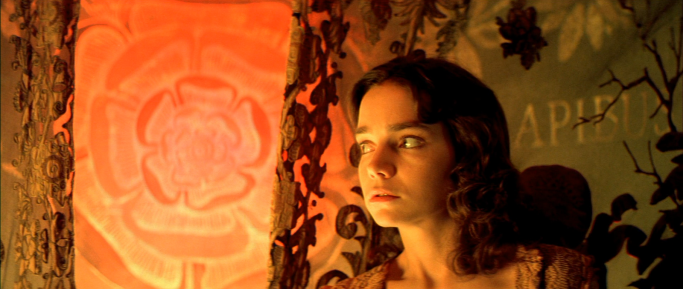
The Latin phrase sub rosa means “under the rose”, and is used in English to denote secrecy or confidentiality. The rose as a symbol of secrecy and the occult has an ancient history. Jessica Harper, sub rosa, in Suspiria, 1977.
“Who dares misery love
and hug the form of Death?
Dance in Destruction’s dance
To him the Mother comes.”
Kali the Mother (poem) by Swami Vivekananda
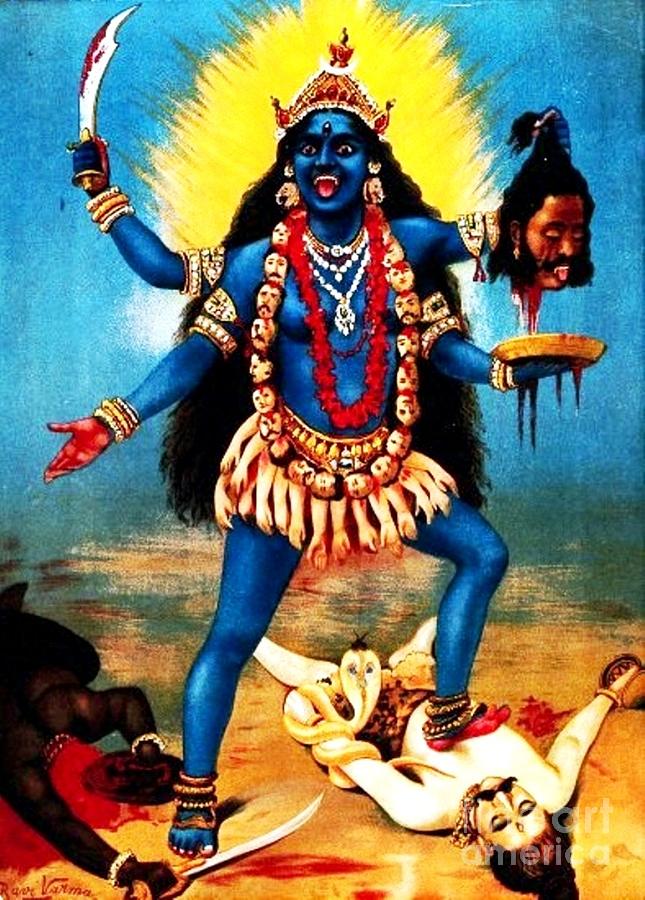
Kali by Raja Ravi Varma. The goddess Kali; naked, black and terrible as the dread realities of life and death.
In Part 1 we saw how Thomas De Quincey, in his exceptional work: ‘Levana and Our Ladies of Sorrow’ (a part of his ‘Suspiria de Profundis’ (1845) which gave the name to Dario Argento’s cinematic masterpiece – Suspiria) was able to personify those forces “that incarnate themselves in all individual sufferings of man’s heart;” in the form of The Three Mothers: Mater Suspiriorum – the Mother of Sighs, Mater Lachrymarum – the Mother of Tears, and Mater Tenebrarum – the Mother of Darkness. These powers which afflict every human – sighs, tears, and darkness – were seen by De Quincey as existential conditions which are a commission from God “to plague the human heart until they have unfolded the capacities of the spirit.”
In Part 2 we noted how this dark, mythic, feminine trinity has an ancient pedigree tied to Witchcraft and goddesses extending back to ancient times. Some of these occult elements have slipped, deliberately or by fortune, into Argento’s Three Mothers trilogy, as well as in other horror tales and films.
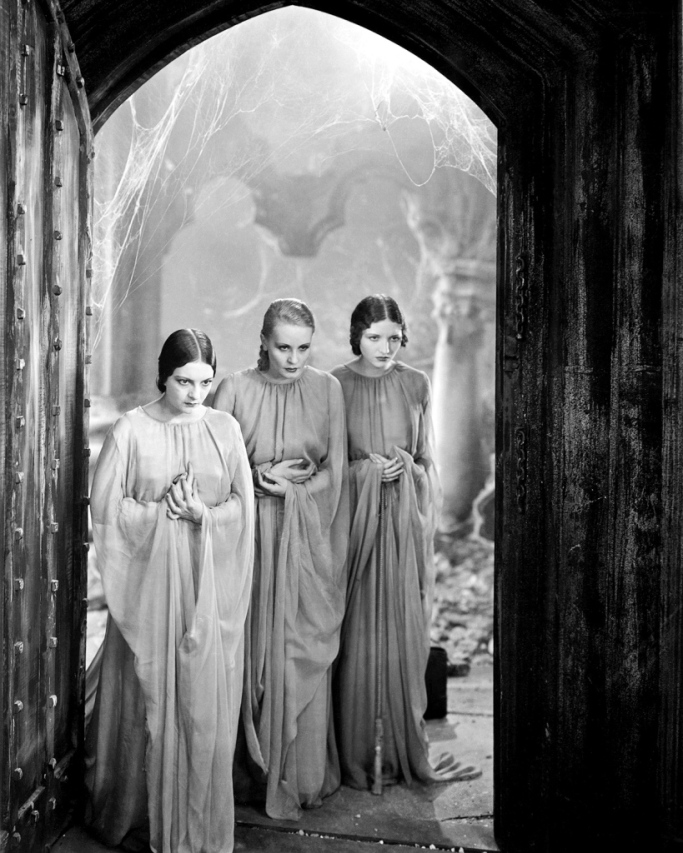
Another diabolical feminine trinity and example of unholy motherhood and the shadowy feminine: The Brides of Dracula. Dracula, 1931. In the novel, the brides are offered a wailing infant by their dark master in order to appease their bloodlust. The Shadow side of the Mother as devourer of her own young.

The Brides of Dracula subject Jonathan Harker (Keanu Reeves) to a Left-Hand Path spiritual experience in Bram Stoker’s Dracula. The Bride on the left, like the Gorgon, the Furies and sometimes Hecate, has serpents wreathed in her hair. The offering of a babe by Dracula (literally: The Dragon) to the three brides (in lieu of Jonathan Harker) is included in this 1992 film version.
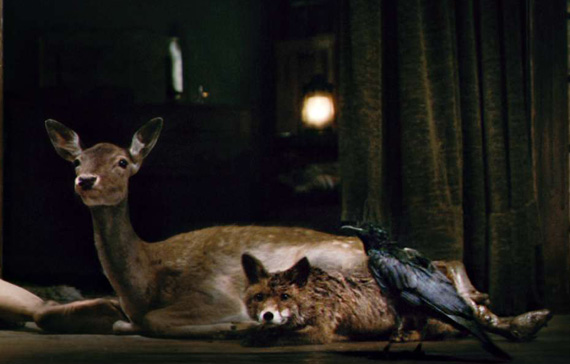
“The 3 Beggars” – Grief, Pain & Despair – in Lars Van Trier’s Antichrist, 2009. There is a discernible resonance with The Three Mothers motif and the darker aspects of Mother Nature in this film.
Besides inspiring SUSPIRIA’s creator Dario Argento with an excellent trope for his Three Mothers trilogy, we also discover in De Quincey’s Suspiria de Profundis an ancient and profound spiritual truth: “that mighty system of central forces hidden in the deep bosom of human life, which by passion, by strife, by temptation, by the energies of resistance, works for ever upon children – resting not day or night,…” In our development towards adulthood, and with the complicity of goddess Levana, these forces – sighs, tears and darkness, or “The Three Mothers” – work upon each of us at the core of our being, our psyche. That part which forever looks for succor, strength and understanding in the face of adversity experienced in the inevitable crises of human existence.
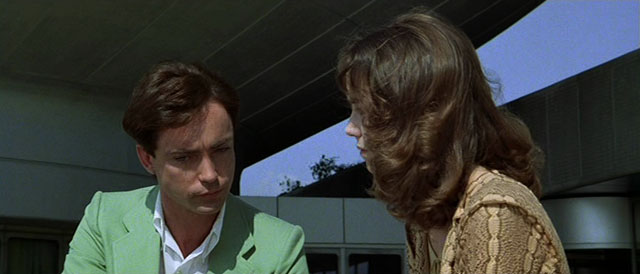
Udo Kier and Jessica Harper in Suspiria. 1977.

Udo Kier in Mother of Tears, 2007.
Seeking succor or understanding in The Three Mothers trilogy often leads to a conversation with the wonderfully talented Udo Kier or Daria Nicolodi.
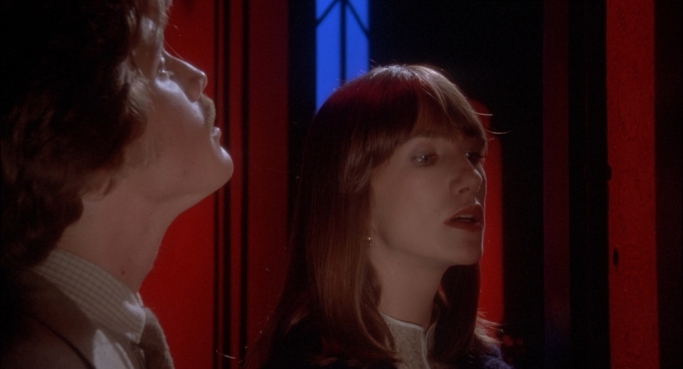
Leigh McCloskey and Daria Nicolodi in Inferno. 1980.
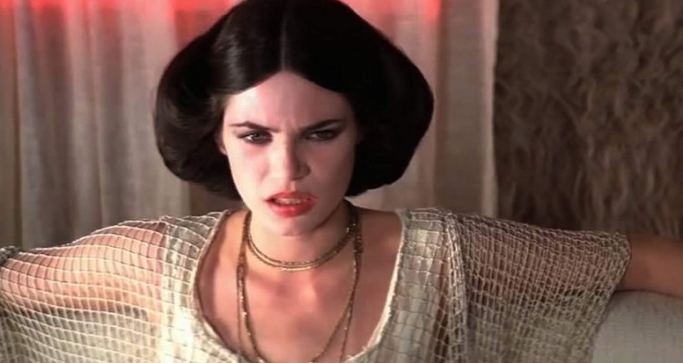
Barbara Magnolfi as Olga in Suspiria. She is seated like a goddess from ancient Europe, like Cybele or the Lady of Elche. A woman who, we suspect, knows more about the mysterious Tanz Academy than she cares to admit.
Now, when seeking for the Devil In the Details in occult themed horror films, adversity, or the idea of an Adversary, logically leads us to Satan, which is Hebrew: שָּׂטָן satan, meaning “enemy” or “adversary.” Any thing which opposes us, or which we fear, or that seduces and leads astray from the Right Hand Path laid out by the traditionally accepted social structures in which one lives, whatever operates as an energy of resistance is exactly what bedevils us. But when we view adversity through the lens of De Quincey’s opium induced revelations in Levana and Our Ladies of Sorrow, the words of Prof. Brené Brown ring true: “The dark does not destroy the light; it defines it.”
Will Tears, Sighs and Darkness crush us? Or, will the opposing forces necessitate an “unfolding of the capacities of the spirit”?
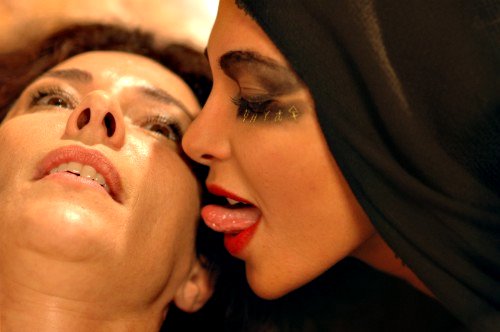
Mater Lachrymarum (Moran Atias) has a taste for tears and fears. Mother of Tears, 2007.
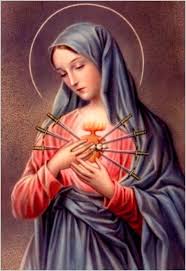
Our Lady of Sorrows
Will Tears, Sighs and Darkness crush us? Or, will the opposing forces necessitate an “unfolding of the capacities of the spirit”? Embracing Darkness, tasting our own tears – and the tears of the world. Confronting the Shadow within oneself, and in the outer world in which we walk and work, is required for growth – individually and as a society. As spiritual beings are we not defined by our limitations? Moreover, are we not obliged to ever continue expanding beyond our own limits? Are we not forced to evolve from our narrow or outmoded ways of thought? The Adversary provides the resistance that encourages growth and renewal in the courageous heart and mentally stable. This is what we see happen with the protagonists of the three films in Argento’s Three Mothers trilogy.
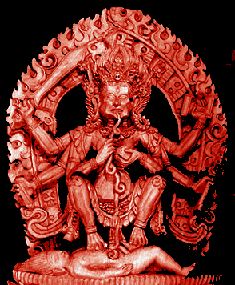
Kali as Devouring Mother
To regress or stagnate for too long is to resist the vital urge to progress, blossom and create, and ultimately to cease living. Life, in all it’s dreary and miserable circumstances, challenges us to transcend our boundaries and to take our path (inwards and outwards) towards the next level. We soon learned that Death and Renewal are the name of the game of life which sets out to devour you – body and soul.
∇∇∇∇∇∇∇∇∇∇∇∇∇∇∇∇∇∇∇∇∇∇∇∇
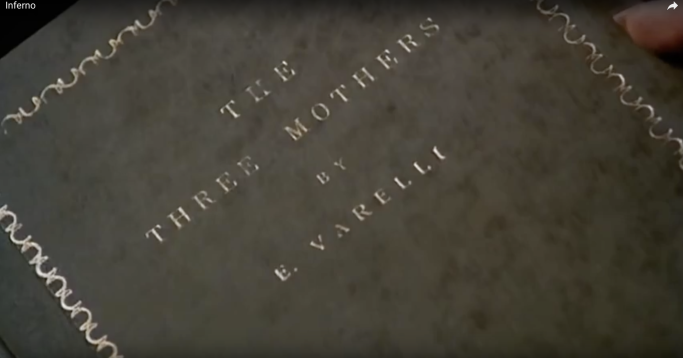
Inferno, 1980
There are three keys to understanding The Three Mothers, as we learn in the introduction of Inferno…
The first Key: The area around the location of the houses of The Three Mothers becomes blighted and are places of death. There is a miasma around their houses like a sickly-sweet smell. The smell of death and decay. As beings existing in conditioned material existence, (i.e. the body is my house of flesh), death is certain; the body’s earthy odor may be disregarded or disguised but never extinguished. These jars of clay we inhabit reek of the earth and are short-lived. This odor is the ever-present knowledge of our own mortality.
The Second Key: The name and the portrait of the Mother residing in each house is to be found in the cellar. That is to say, behind the outward facade of the personas we parade about in the daylight world, the presence of Sighs, Tears and Darkness often remain below the surface – unacknowledged, in the basement of the subconscious – where the monsters dwell. But these demons may be awakened and summoned under strange circumstances or by forbidden or occult methods, like with De Quincey’s opium dreams.
The Third Key: “Is to be found beneath the soles of your shoes”; that is, where you stand at any given moment of your life. For we are ever standing at the crossroads of Hekate, of past, present and future, left or right or forwards. Wherever or whenever we find ourselves we are always confronted by a choice of direction, where to go and how we spend our limited amount of time as embodied creatures on earth.
Time is short. The ticking of a clock is the steady footsteps of an assassin approaching.
Mater Tenebrarum states at the conclusion of Inferno…

Veronica Lazar, Inferno, 1980, as Mater Tenebrarum
Mater Tenebrarum: “Your journey has come to an end. Everything around you will become dark, and someone will take your hand. You’ll be pleased, not unhappy. You’ll enjoy moments of incredible brightness. You think it’s magic. No, I’m not a magician. Now we have to hurry because we still have to pass through a number of strange phases in your change. You were looking for me, just like your sister. This is what you wanted. I’m coming to get you!”
Mark: “Tell me who you are!”
Mater Tenebrarum: “The Three Mothers. Haven’t you understood? Mater Tenebrarum! Mater Lachrymarum! Mater Suspiriorum! But men call us by a single name; a name which strikes fear into everyone’s heart. They call us DEATH! DEATH!”

Through a mirror darkly. Mater Tenebrarum reflects our greatest fear.
Death and renewal is the specific work of the Dark Goddess. Death of the outworn habits, or ways of thinking or acting, which constrict or no longer serve us along our chosen paths.
As beautifully expressed by the soul journeying in the afterlife in The Egyptian Book of the Dead:
“I am a long lived serpent; I pass the night and am reborn every day. I am a snake which is in the limits of the earth; I pass the night and am reborn, renewed and rejuvenated every day.”
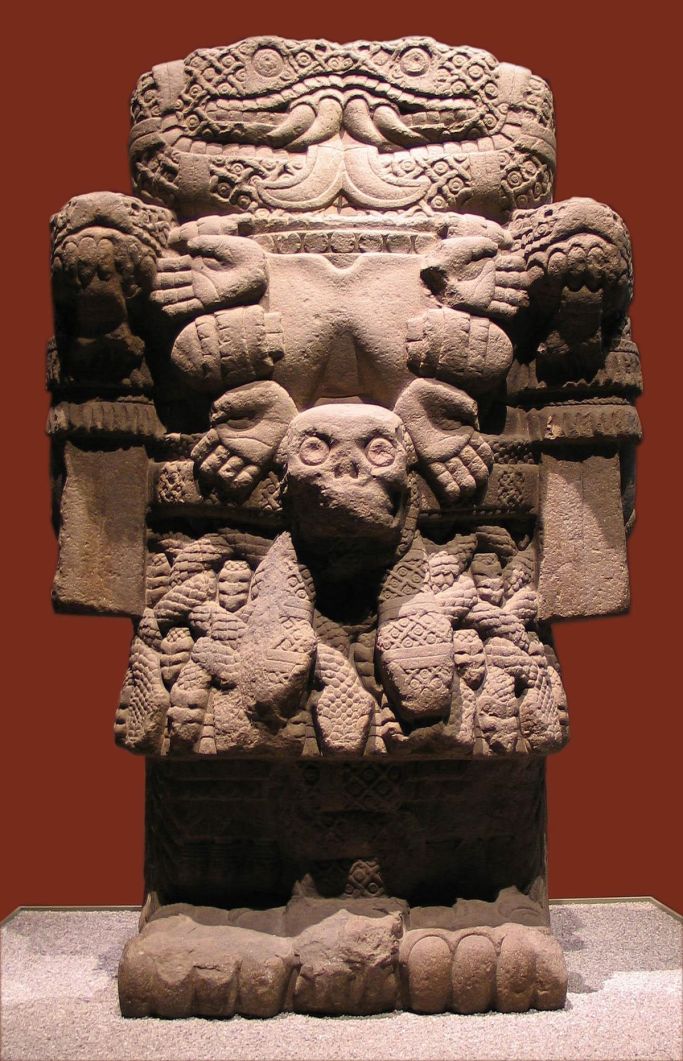
“Mother of the Gods,” Coatlicue, “She of the Serpent Skirt,” a 2.7 metre (8.9 ft) tall statue discovered in Mexico City in 1790. Europeans regarded the statue as a horrible, deformed monster. Mexican Indians on the other hand began to worship it, visiting it with candles and adorning it with flowers. To prevent this, the statue was buried in the patio of the University of Mexico where it could not be seen. Note the garland of severed hands, hearts and skull and compare with the Indian goddess Kali who is similarly adorned. Her head is severed and two serpent heads are emerging and uniting, merging the dual streams of existence. Compare to Kundalini-Shakti, Chinnamasta, et al.
“Gods suppressed become devils, and often it is these devils whom we first encounter when we turn inward.”
– Joseph Campbell
ψψψψψψψψψψψψψψψψψψψψψψψ
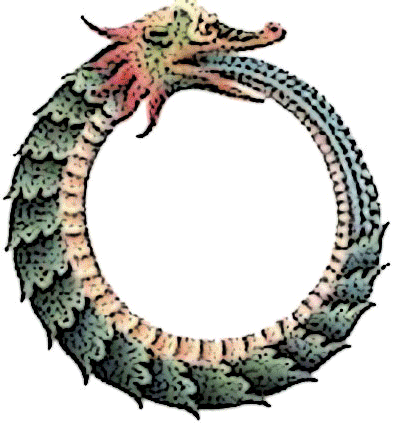
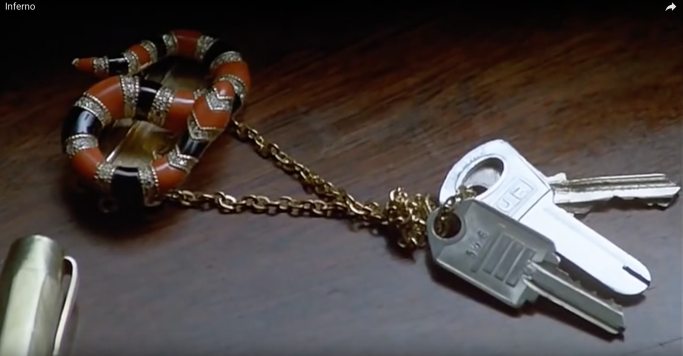
Three keys are given in Argento’s Inferno, 1980
Reject, Explode, Explore, Unlearn
We mentioned in Part 2 that the snake is a symbol of the Gnostic witch goddess Hecate, whose affinity with the Three Mothers we elucidated. As a symbol, the serpent (or magnified as the dragon) plays an integral part in occultism and is also often associated with other female deities and demonesses acquainted with the chthonic – or cosmic – powers of transformative darkness from various Pagan cultures: Tiamat, Lilith, Lamia, Ceto, Medusa, Kali, Coatlicue, et al.
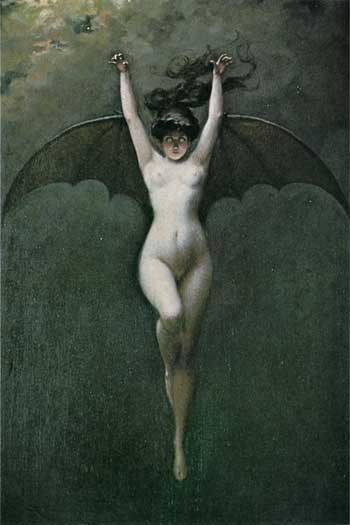
Albert-Joseph Penot, Bat woman, 1890. Our image of Lilith.
These goddesses are usually depicted with fierce or horrific embodiments and attributes – often embellished by serpent imagery. The lesson expressed here through all times and cultures is that of transformation. Death and renewal come when we confront our fears and desires and learn to dance with the Shadow.
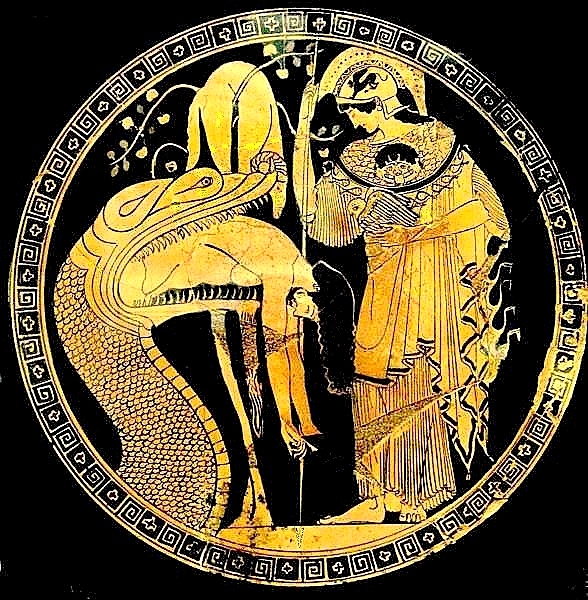
Athena, goddess of wisdom, bearing the Gorgon head on her breastplate (heart chakra) and the owl – a creature with the ability to see in darkness – in her left hand, oversees the rebirth of the hero Jason from the mouth of the devouring serpent- dragon.
A serpent sheds it’s skin when it has become worn out.
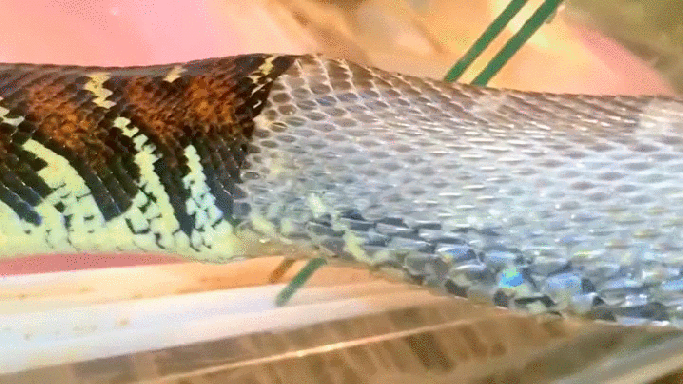
From cloudy husk to renewed beauty.
Just as the moon sheds it’s shadow every month…

“…we still have to pass through a number of strange phases in your change.” From darkness into light and back around again.
Or a duckling chick outgrows it’s egg.
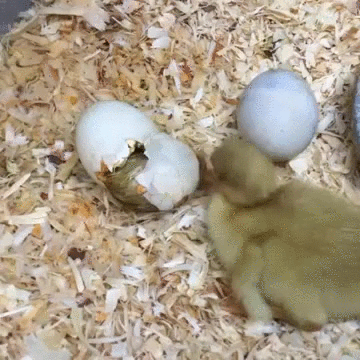
It is neccesary to destroy the old form in order to release the new. Ducks and geese take part in the three elemental realms of land, water and air.
“Every act of creation is first an act of destruction.”
~ Pablo Picasso
The Dark Goddess resides at the crossroads of transformation.
Offer your sighs, tears and darkness at her altar and be transformed.
Ψ∇∇∇∇∇∇∇∇∇∇∇∇∇∇∇∇∇∇∇∇∇∇∇∇∇∇∇∇∇∇∇∇∇Ψ
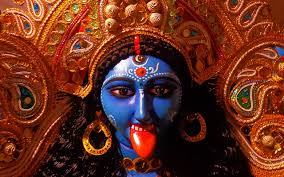
Bengali cult image of Kali
Sex & Death
These are some esoteric icons of Our Ladies of Darkness
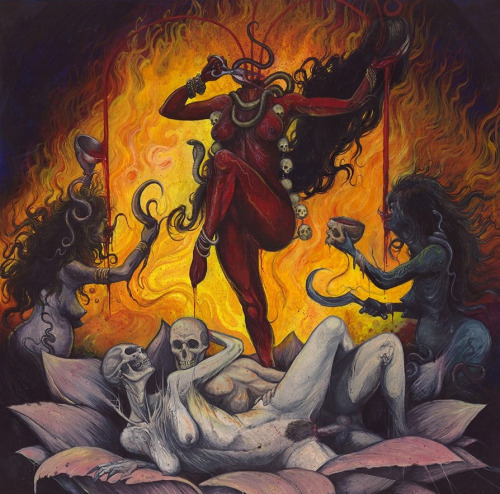
Chinnamasta is a Tantric goddess par excellence. artist: Daniel Corcuera Nekronikon Temple
When it comes to Dark Goddesses and horror, Indian culture has exhibited some of the most sublime and profound examples of the terrible feminine divine. Kali is a goddess widely worshipped. Her name means “The Force of Time,” and “The Black One;” for Time births, sustains, transforms and devours all. This Dark Goddess has various forms and avatars. One which bears relevancy here is a triple formed icon: Chinnamasta, the Beheaded Goddess, who – like Hecate – is 3 goddesses in 1.
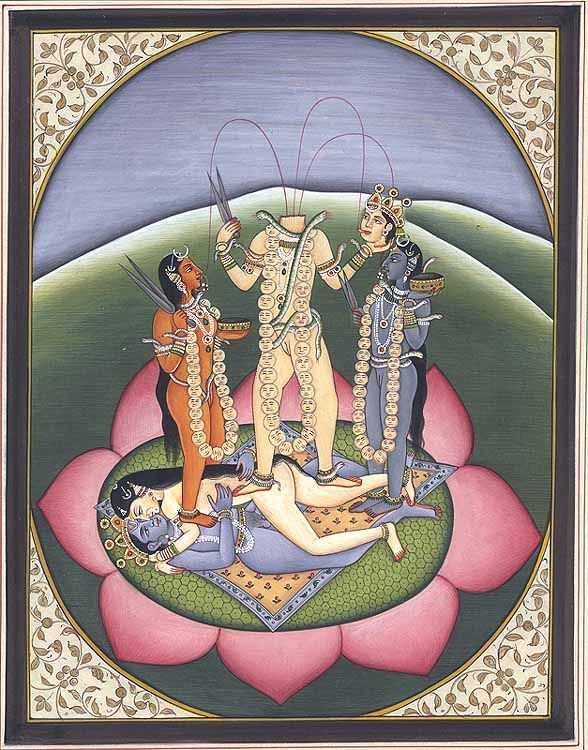
Chinnamasta: A triple goddess, empowered by Desire – the primal, foundational sexual energy which is the cause and gateway of existence, decapitates herself in order to nourish her two companions (the dual forces of existence personified within the field of time) with her own blood, and herself as well. The incessant recycling flow of life. Here the goddesses carry shears like Atropos of The Fates.

The Mother of Darkness demands blood in Inferno, 1980.
In a profound act of self sacrifice we see Chinnamasta decapitate herself. Three streams of blood spout from her neck to nourish her two handmaidens, Varnini and Dakini. The third stream reaches the goddess’s own mouth to be consumed by her own severed head. She stands upon Kama, the god of eros, embraced by his female companion, Rati, who takes the female superior position. This is a mystical truth as a metaphorical image of the sublime horror of life feeding upon death, with sex and death (and rebirth) as the doorways between the worlds.

Her mantra is: “I bow to Chinnamasta; She who is the Sacrifice, the Sacrificer, and the Receiver of the Sacrifice. May She liberate all beings.” Chinnamasta, Calcutta Art Studio lithograph, c. 1885

“She” takes the assertive posture in the film Antichrist.
Sex, death, transformation… these are the keys of the Dark Goddess, The Dark Mother. While it may seem that we have strayed far from Suspiria, we have managed, by reading the occult symbols and looking at myths, to obtain some spiritual insight from an occult horror film series. If it is not obvious at first, even to the film makers, it is for the simple reason that “the occult” literally means what is “hidden” or secret, even when it is a plain and open secret. Something which the rational mind often pushes away into shadowy corners. Sex and death, sorrows and tears, sighs and darkness are an inevitable part of conditioned (physical) human existence, but their wisdom is “sub rosa.”
We are all limited by time, Mother Kali, which restricts us to these material conditions. We can fear and be disturbed by these forces, but we can also permit them to transform us and teach us profound truths.
Sex and death, sorrows and tears, sighs and darkness are an inevitable part of conditioned human existence.
Were these symbols which we’ve examined in this 3 part article used consciously by the filmmakers in bringing these vivid nightmares to the silver screen? Perhaps a few. More likely it is the work of the disturbed, or exalted, human imagination that summons these iconic accoutrements and archetypes forth from the shadows of the subconscious. What we do know is that both Thomas De Quincey’s ‘Suspiria de Profundis,’ and Dario Argento’s Three Mothers Trilogy, whether consciously or unconsciously, have tapped into something primal and eternal, with the ability to evoke humankind’s primal fears at their deepest level… sub rosa.
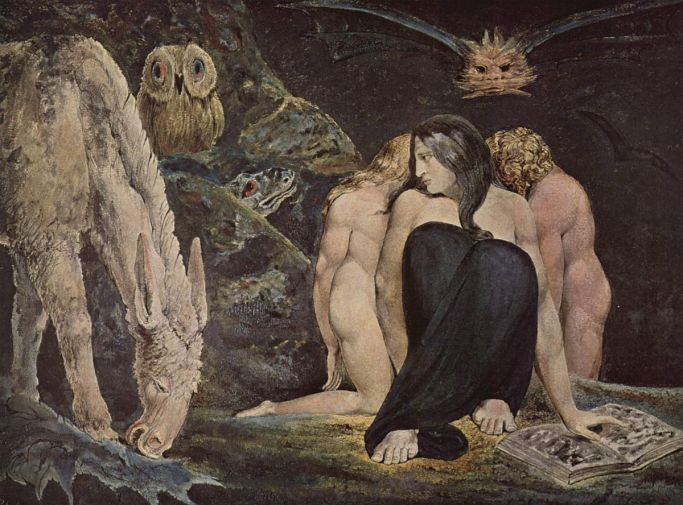
The Night of Enitharmon’s Joy, often referred as The Triple Hecate or simply Hecate, is a 1795 work of art by the English artist and poet William Blake
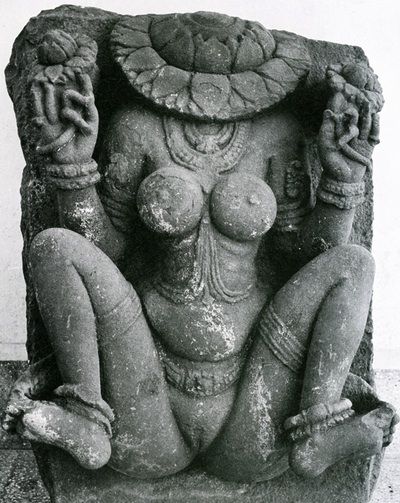
Indian Yogini with ever-blossoming lotus for head. stone sculpture
Sub Rosa
If you enjoyed this 3-part article on Suspiria and the Dark Goddess, please feel free to like, share, comment and view our other projects here at Devil In the Details. We hope to have more things of interest in the near future.
Finally, we leave you with these images of the Headless Yogini, or Flowering or Blossoming Yogini. The ever-blossoming and expansion of cosmic consciousness firmly rooted in the physical plane.
May you break open and blossom to unfold the capacities of your spirit.
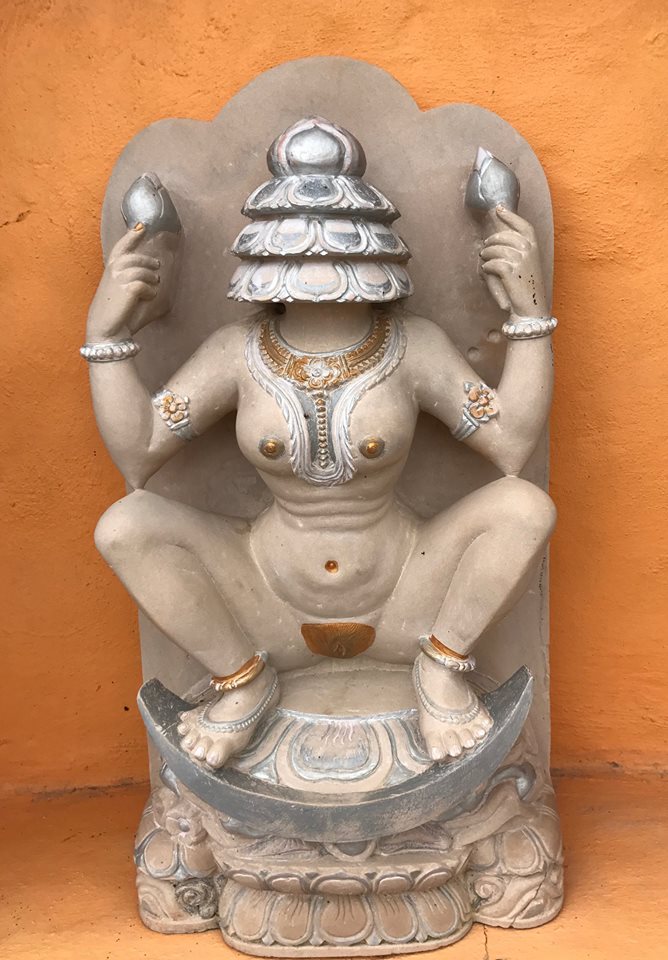
This is a Yogini inspired by Lajja Gauri iconography that was made in Orissa and that is now at the Yogini Temple of Purnima in Villa de Leyva, Colombia. More info is available Via Facebook @yoginisoracle

